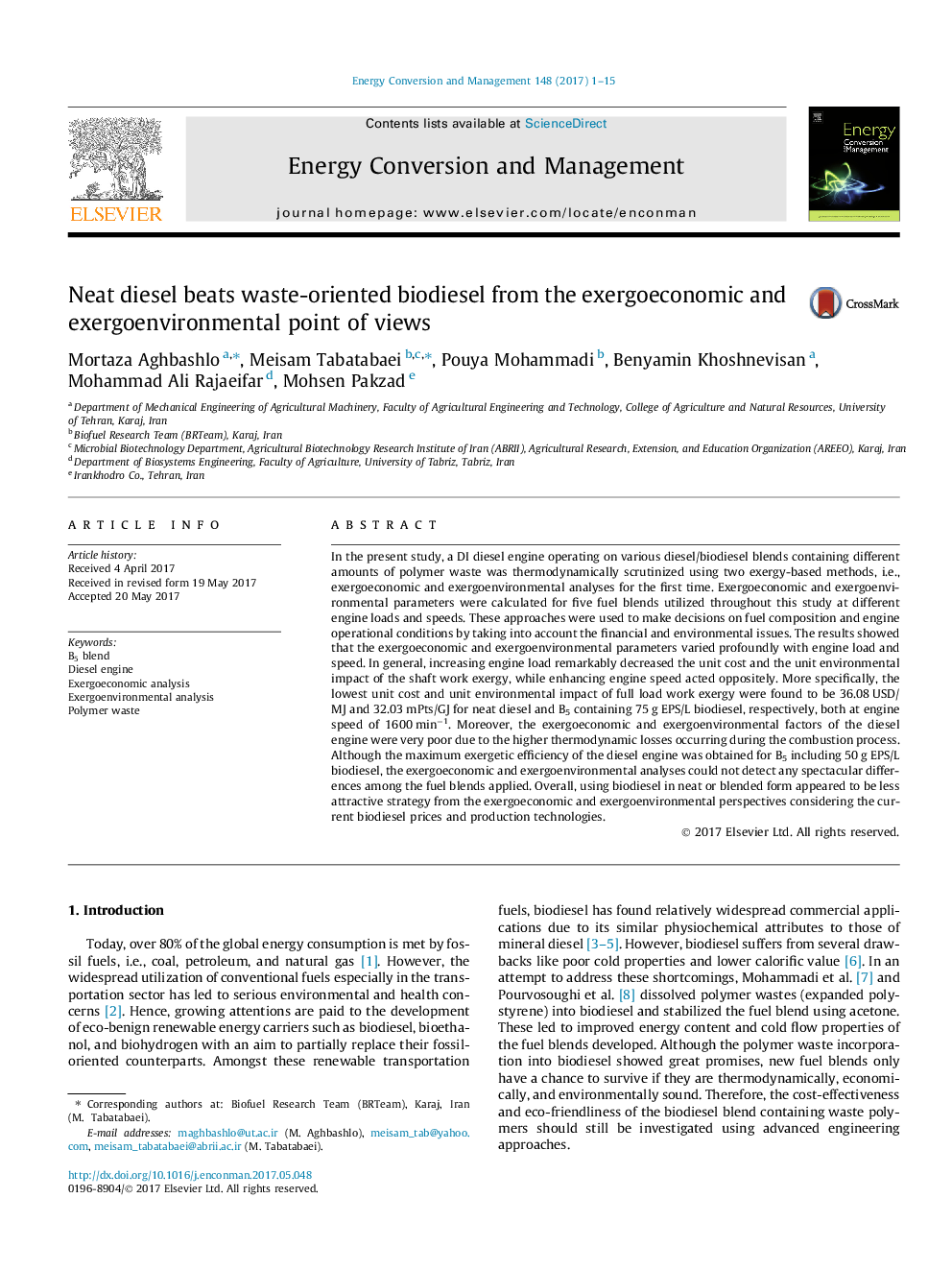| Article ID | Journal | Published Year | Pages | File Type |
|---|---|---|---|---|
| 5012568 | Energy Conversion and Management | 2017 | 15 Pages |
Abstract
In the present study, a DI diesel engine operating on various diesel/biodiesel blends containing different amounts of polymer waste was thermodynamically scrutinized using two exergy-based methods, i.e., exergoeconomic and exergoenvironmental analyses for the first time. Exergoeconomic and exergoenvironmental parameters were calculated for five fuel blends utilized throughout this study at different engine loads and speeds. These approaches were used to make decisions on fuel composition and engine operational conditions by taking into account the financial and environmental issues. The results showed that the exergoeconomic and exergoenvironmental parameters varied profoundly with engine load and speed. In general, increasing engine load remarkably decreased the unit cost and the unit environmental impact of the shaft work exergy, while enhancing engine speed acted oppositely. More specifically, the lowest unit cost and unit environmental impact of full load work exergy were found to be 36.08 USD/MJ and 32.03 mPts/GJ for neat diesel and B5 containing 75 g EPS/L biodiesel, respectively, both at engine speed of 1600 minâ1. Moreover, the exergoeconomic and exergoenvironmental factors of the diesel engine were very poor due to the higher thermodynamic losses occurring during the combustion process. Although the maximum exergetic efficiency of the diesel engine was obtained for B5 including 50 g EPS/L biodiesel, the exergoeconomic and exergoenvironmental analyses could not detect any spectacular differences among the fuel blends applied. Overall, using biodiesel in neat or blended form appeared to be less attractive strategy from the exergoeconomic and exergoenvironmental perspectives considering the current biodiesel prices and production technologies.
Related Topics
Physical Sciences and Engineering
Energy
Energy (General)
Authors
Mortaza Aghbashlo, Meisam Tabatabaei, Pouya Mohammadi, Benyamin Khoshnevisan, Mohammad Ali Rajaeifar, Mohsen Pakzad,
